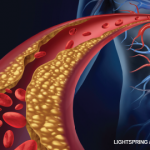“Provided that subsequent studies confirm this galectin-3 approach, and it is applied in practice, it can better inform patients with RA on their cardiovascular risk,” she says. “In this sense, it could help identify individuals in need of more close monitoring [who can then] subsequently [be treated] more aggressively [for] their cardiovascular factors.”
The main challenge is confirming these associations in patients with RA before the onset of cardiovascular disease.
Further Investigation
Although this work generates new hypotheses on the role of galectin-3 in RA, Dr. Anyfanti says the results need to be verified in larger cohorts.
“We did notice a non-significant increase in galectin-3 levels in the subgroup of RA patients without cardiovascular comorbidities compared with healthy individuals,” Dr. Anyfanti says. “We plan to validate this study through a larger one on patients with RA who are yet free from cardiovascular complications.”
Additionally, as part of her post-doctoral research, Dr. Anyfanti and her co-investigators are working to identify novel markers for the assessment of endothelial dysfunction and thrombotic microenvironment in RA, the inaugurate processes of cardiovascular diseases. “We also will explore associations of such markers with disorders of the microcirculation before the establishment of clinically evident cardiovascular complications in RA,” she says.
Carina Stanton is a freelance science journalist based in Denver.
Reference
- Anyfanti P, Gkaliagkousi E, Gavriilaki E, et al. Association of galectin‐3 with markers of myocardial function, atherosclerosis and vascular fibrosis in patients with rheumatoid arthritis. Clin Cardiol. 2019 Jan;42(1):62–68.
